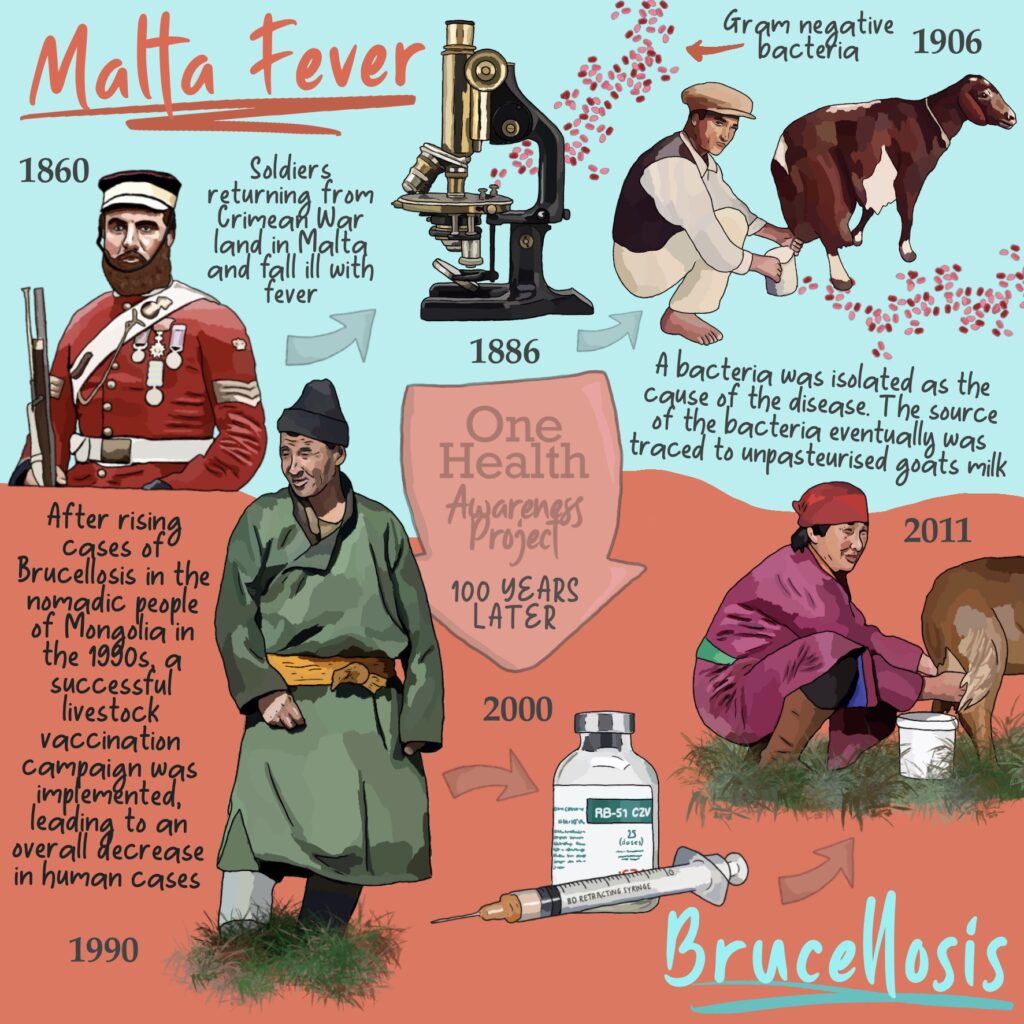In 1856, as British soldiers returned from the Crimean War to Malta, many were struck down by a disease that became known as ‘Malta/Mediterranean Fever’ (and is now known as Brucellosis). British army doctors studied the disease, which caused several hundred soldiers to fall sick each year, with some staying in hospital for up to 2 years! It wasn’t until 1886 that a British/Australian microbiologist, David Bruce, identified the responsible pathogen that had affected the foreign soldiers, a bacteria now named ‘Brucella melitensis’. In 1904 the Mediterranean Fever Commission was instigated as every year hundreds of soldiers and sailers continued to fall ill. Dr Zammit, a Maltese doctor, recognised that goats were somehow involved, eventually testing and providing evidence that over half the goats on the island of Malta were positive for B. melitensis, with 10% of the goat population secreting bacteria in their milk, and subsequently infecting humans. Cases increased until the 1940s when the method of pasteurisation of milk was finally accepted by the locals. Cases continued to occur throughout the 20th century.

Jump to 1990 Mongolia, with nomadic livestock rearing occurring widely. Roughly 146,000 herding families rearing domestic animals contribute 500-600 cases of human brucellosis every year. As cases continued to rise from the early 1990s, a successful livestock vaccination campaign was started in 2000 leading to an overall decrease in the level of brucellosis. Annual surveillance of cases continues, in 2011 a total of 168,000 animals were blood sampled. Brucellosis continues to be an important and widespread global zoonotic disease.
